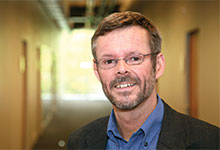BMMLAB at FIRN 2019
Peter Bossaerts and Felix Fattinger presented some of BMMLAB's research into asset pricing at the 9th annual FIRN conference in Byron Bay in November.

Felix presented results of some of the Lab's experiments on asset pricing under computational complexity, where we studied how markets help solve the standard but computationally hard problem of maximising utility over indivisible goods subject to a budget constraint. In a first experiment with complete markets, we tested whether prices fully reveal the solution. We found that complete markets are fairly ineffective, and that quality decreases with instance complexity using a metric suggested in the theory of computation. Still, participants use information in prices and volume to improve their choices. In a second experiment, and inspired by the theory of oracles in computer science, we show that a reduction to only one carefully chosen traded asset dramatically improves price quality and information dispersion. Our analysis provides a formalisation of Hayek's ideas about the transmission of knowledge in societies through markets (Hayek, 1945). Ours is fundamentally different from the noisy rational expectations asset pricing model proposed in Grossman (1976, 1981), because it does not appeal to mathematical statistics, but to the theory of computation.

Peter delivered a presentation on asset pricing in a world of imperfect foresight. We considered a canonical model of asset pricing, where agents with quadratic preferences are allowed to re-trade a limited set of securities for a number of periods, after which these securities expire, and agents consume their liquidation values. A key assumption in this model is that agents have perfect foresight: they correctly predict prices in all future contingencies. We show that, under myopia, prices generically are as if agents had perfect foresight. Yet their choices are "wrong," because agents ignore that they can re-trade. In an experiment, prices and choices are found to be as predicted by myopia.
